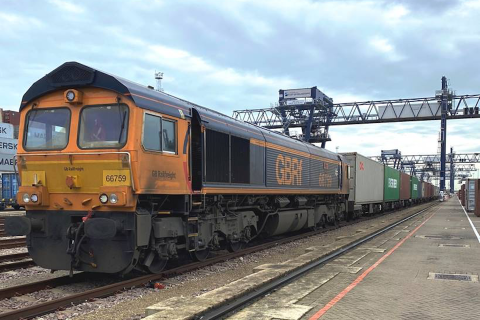European infrastructure CEOs discuss the future of TEN-T network

Today in Brussels, chief executives from rail infrastructure companies discussed the upcoming revisions of the TEN-T and RFC Regulations, the importance of international rail passenger traffic and acceleration of railway digitalisation.
At the invitation of Belgian rail infrastructure manager, Infrabel, this year’s High-Level Infrastructure Meeting (HLIM) took place in Brussels on 17 November 2021 at the Infrabel Academy. Jointly organised by the Community of European Railway and Infrastructure Companies (CER) and the association of European Rail Infrastructure Managers (EIM), the annual meetings between the heads of rail infrastructure companies provide a platform for exchanging information and experiences, with a view to finding common solutions to support rail traffic in Europe.
Completing the TEN-T network
The CEOs of rail infrastructure companies discussed the upcoming revisions of the TEN-T and Rail Freight Corridor Regulations of the European Commission. Panellists discussed how infrastructure managers can ensure the completion of TEN-T Core and Comprehensive Networks to achieve the necessary modal shift and exchanged views on the optimisation of operations and traffic management with the establishment of the European Transport Corridors.
In another panel, speakers agreed that digitalisation is an indispensable driver for the modernisation of the entire transport system. Solutions such as European Traffic Management System (ERTMS), Automated Train Operations (ATO), digital traffic management systems, digital tracking and tracing applications and data interoperability will improve rail performance and competitiveness. Infrastructure managers discussed the main priorities for IMs to accelerate digitalisation in the railway market and the need to address the imbalance between the often-limited ability of the railway sector to invest and take up new technologies and the increasing speed at which society and economy evolve.
Lot of potential
CER Executive Director Alberto Mazzola said: “The rail sector has many challenges ahead, but also a lot of potential. We see the upcoming legislative proposals on the Green Mobility Package as an opportunity for rail to offer even greater reliability and quality to customers and provide interoperable and pragmatic solutions. Rail is the present and future of sustainable mobility, and infrastructure investments are the future of our development and growth.”
EIM Executive Director Monika Heiming said: “Rail infrastructure managers are key actors to ensure the competitiveness of the rail in a decarbonised economy. Green finance and digitalisation are important levers to achieve this objective. In that sense, the HLIM 2021 provided an excellent opportunity for cooperation and exchange among all IMs. Together, we will shape the corridors and networks of the future, open to all.”
You just read one of our premium articles free of charge
Want full access? Take advantage of our exclusive offer






